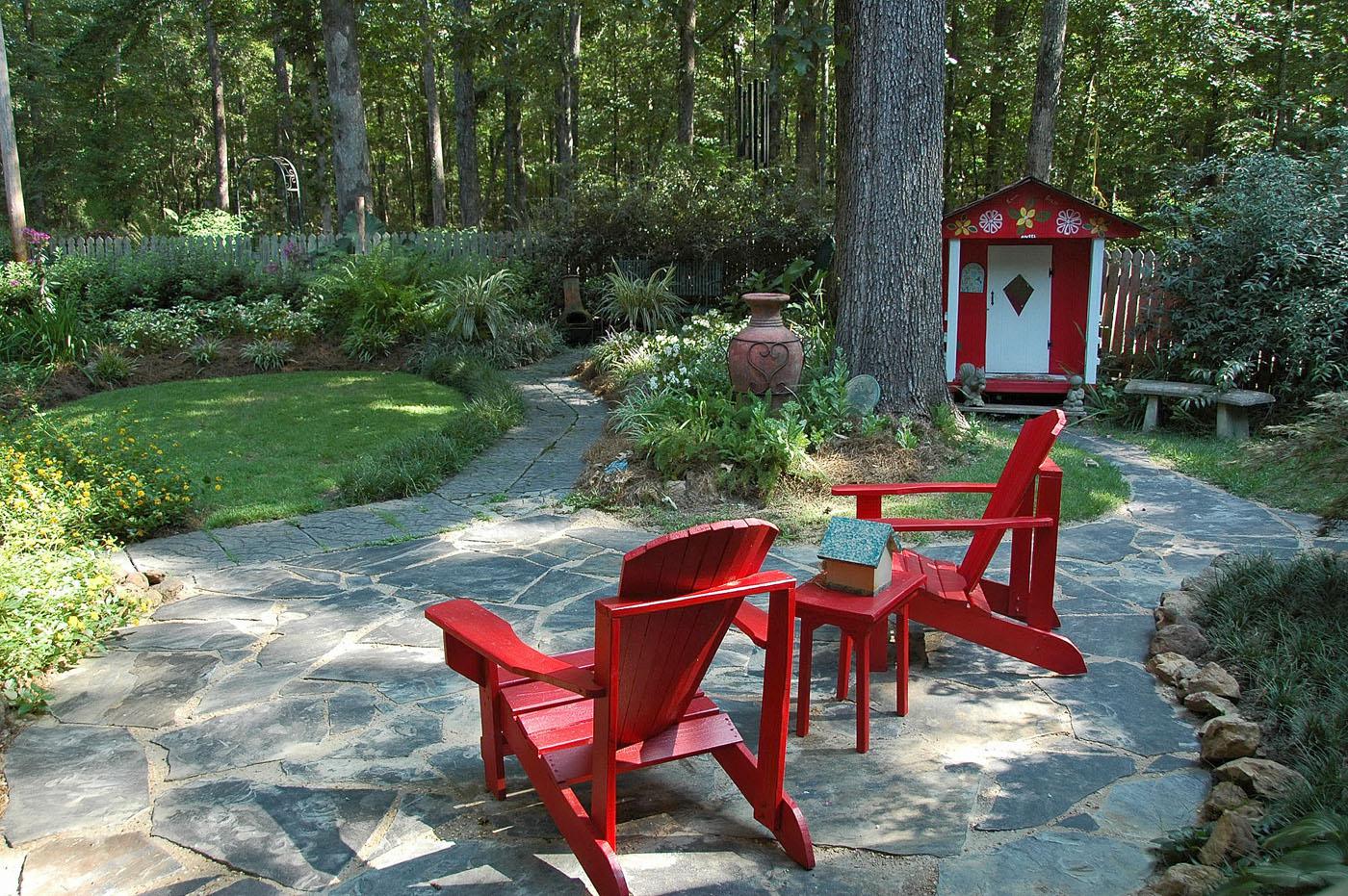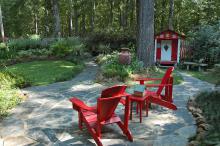Information Possibly Outdated
The information presented on this page was originally released on August 27, 2009. It may not be outdated, but please search our site for more current information. If you plan to quote or reference this information in a publication, please check with the Extension specialist or author before proceeding.
Using red successfully may start with accents
By Norman Winter
MSU Horticulturist
Central Mississippi Research & Extension Center
Red is a color that many gardeners want in the landscape but find very difficult to use successfully. The secret, however, may lie in your accent features.
It seems strange to think that red may be hard to use. There are red roses, red zinnias, red petunias and scores of other red flowers, but if you place them near each other, a wave of nausea may sweep over you.
Red is one of the hardest colors to work. Unless you know a couple of secrets to building a monochromatic color scheme, it is practically impossible to build one with red.
There is a true red, a saturated red. Add a touch of yellow, and you get an orange hue. For warm partnerships, reds work wonderfully in combination with orange and yellow flowers. On the other hand, mixing blue with red gives purple; mix it with white, and you get pink. These cooler combinations work well with pinks, blues or violets.
Saturated red, or true red, can be combined harmoniously with either pinks or oranges but not both. This is where the task of combining red flowers becomes almost nightmarish.
Red’s complementary color is green, which makes it easy for combining because that is the color of leaves. If you want to add some sizzle, use red with yellow and blue, forming a combination with triadic harmony. Don’t let that word scare you; think of it as a musical trio, which has a soprano, tenor and alto.
If you still have some worries about working with red flowers, do something similar to what Earl and Janice Sims in Kosciusko have done. The other day while filming our Southern Gardening TV segment at their home, it was quite apparent that they like red and know how to use it well. You can do it, too.
As I entered their backyard, the first thing that caught my eye was an outdoor room or sitting area featuring bright red Adirondack chairs. It was a peaceful retreat that beckons visitors to sit and relax.
Down a short walkway nearby is an idyllic children’s play house. Earl built this house for his granddaughter Angel, and it features the same red as the chairs, the kind of color that is exciting and fun for a child.
A short distance away is the Caribbean-blue water of a swimming pool perfect for jumping into on a hot August day. Around the pool were well-placed chaise lounges featuring -- you guessed it -- cushions with the same stimulating red.
Under the poolside cabana were a table and chairs perfect for friends and family to enjoy a favorite beverage or dish. The table featured a tablecloth of the same red color.
By now you’re probably wondering where the flowers are. The Sims had Mississippi Medallion Award-winning Dragon Wing begonias cascading out of large containers, and Sunpatiens New Guinea impatiens with variegated foliage and salmon orange flowers were in a nearby bed. The colors worked together because they were all tipped to red’s warm side.
There is nothing subtle about the color red, but it can be used successfully in your landscape. You may want to start with accent pieces and build outward from there.







